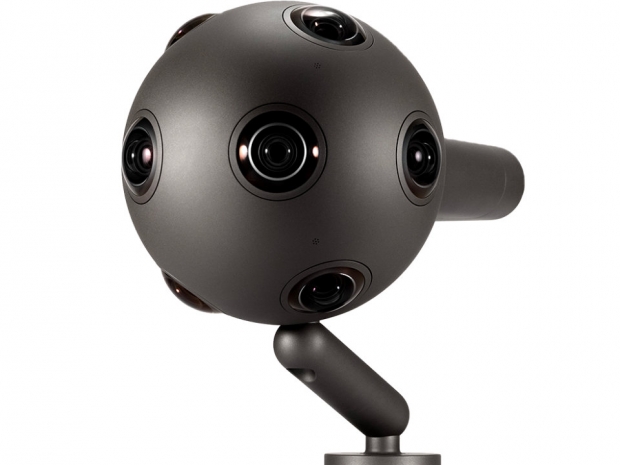Of course, while a probe droid is concerned with searching, scanning and sampling over a wide range of motion, Nokia’s OZO Professional Virtual Reality Camera (PC-01) is more concerned with broadcasting simulated reality to the visually-accessorized masses sitting comfortably on their couches at home.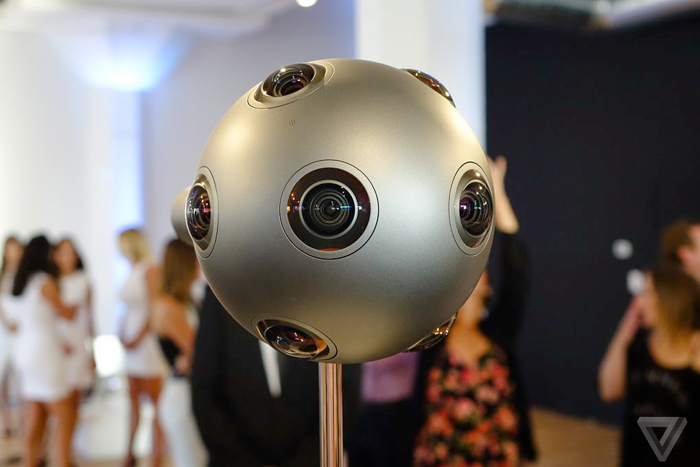
Image credit: The Verge
As such, the company has just created a live-broadcasting option for the device that now enables users to live, breathe and share their VR experiences with others in real time as they happen. Live broadcasting is now supported in full 2K x 2K video resolution (2048x1080p x 2) and 360-degree spatial audio resolution
The device itself is constructed with milled aluminum alloy and measures 263mm x 168mm x 238mm (10.4 x 6.7 x 9.4 inches) with camera mount. The device is a bit heavy, however, topping out at 9.3 pounds (4.3kg) with the battery.
On the video side, the OZO features eight synchronized 2K (2048x1080p) x 2K (2048x1080p) 30fps sensors covering a full-spherical 360 x 180-degrees of video area. We are looking at 195-degrees of view per lens, each featuring an f/2.4 relative aperture with an ISO 400 base sensitivity for video capture. Final video footage is rendered at 8K (7680x4320p) x 10K (10328x7760p) resolution with 10-bit sRGB color.
On the audio side, the device also covers a full-spherical 360 x 360-degrees of sound area using an omnidirectional solid state sensor. Dynamic range is covered at 64 decibels signal-to-noise ratio with up to a 120dB maximum sound pressure level.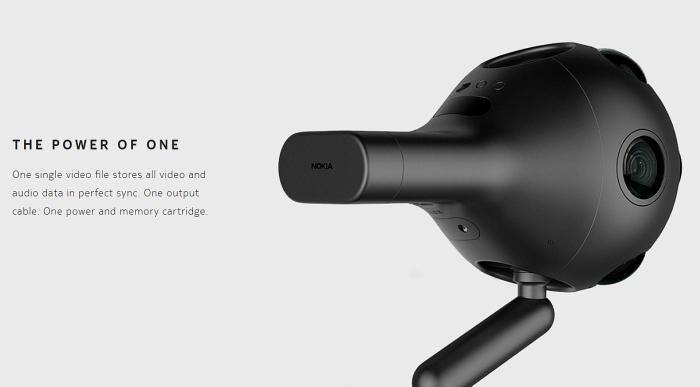
At the end of the day, OZO media files are recorded at 30fps in the .MOV file format (Quicktime MPEG-4) with an 8-channel raw video track and 8-channel PCM audio track. OZO 360-degree spherical media tracks (audio / video or both) can be recorded up to 45 minutes on the included digital cartridge with 500GB SSD.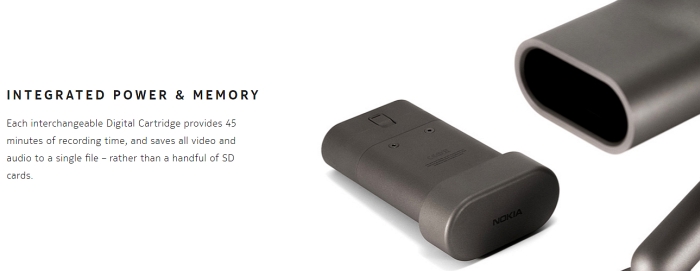
Each digital cartridge includes a rechargeable battery, removable 500GB SSD, also known as an “OZO Media Module,” that supports up to 45 minutes of recording time. These can be purchased separately for $5,000.
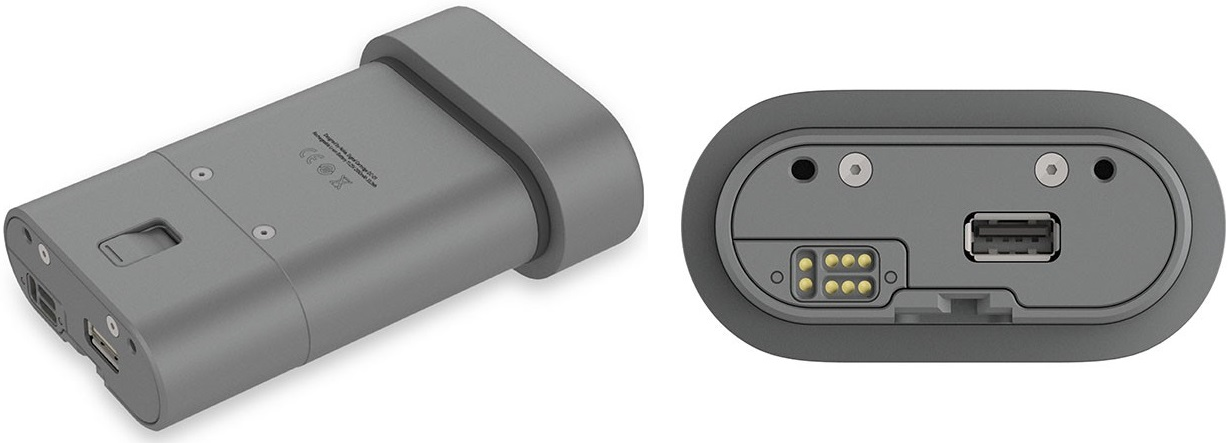
Nokia's OZO Digital Cartridge, featuring a 500GB SSD, rechargeable battery and up to 45 minutes of recording time: $5,000.
Real-time monitoring
Nokia’s real-time monitoring software allows the device to be controlled over 802.11 Wi-Fi with the OZO remote application for Mac OS X. This lets users decide where to make precise sensor adjustments while doing live broadcasts.
Nokia is releasing an OZO Creator tool by the end of this month with support for VR clip stitching to create seamless 360-degree VR tracks. The company also plans to release a VR player developer kit later this spring that will enable VR playback on a developer’s applications.
No Windows support
Unfortunately, the biggest letdown of this entire product is that the company is not supporting Windows PCs with any of its software (OZO Preview, OZO Creator and OZO Remote). Only Mac OS X 10.10 Yosemite devices are supported with a discrete GPU and Retina Display or higher.
Price
$60,000. Put simply, in the second quarter of 2016, 360-degree live VR broadcasting isn’t for light-hearted individuals, and Nokia’s OZO is a fully immersive device capable of sharing and broadcasting exactly what it claims – fully immersive, extra-real recreations and experiences. Of course, Moore’s Law (which does still exist) says that the technology behind 360-degree live VR broadcasting will eventually become affordable to the masses in about six years from today. But for now, let’s enjoy the user reviews from the small handful of journalists and market analysts who were fortunate enough to receive Nokia’s evaluation samples – or the companies and institutions who decide to become early adopters – and make our opinions known early so that by the time live 360-degree VR broadcasting does become affordable, it won’t be lacking in any major areas as far as user expectation and value are concerned.
One thing is for certain. We are getting closer to a Star Wars Imperial reality by the day now.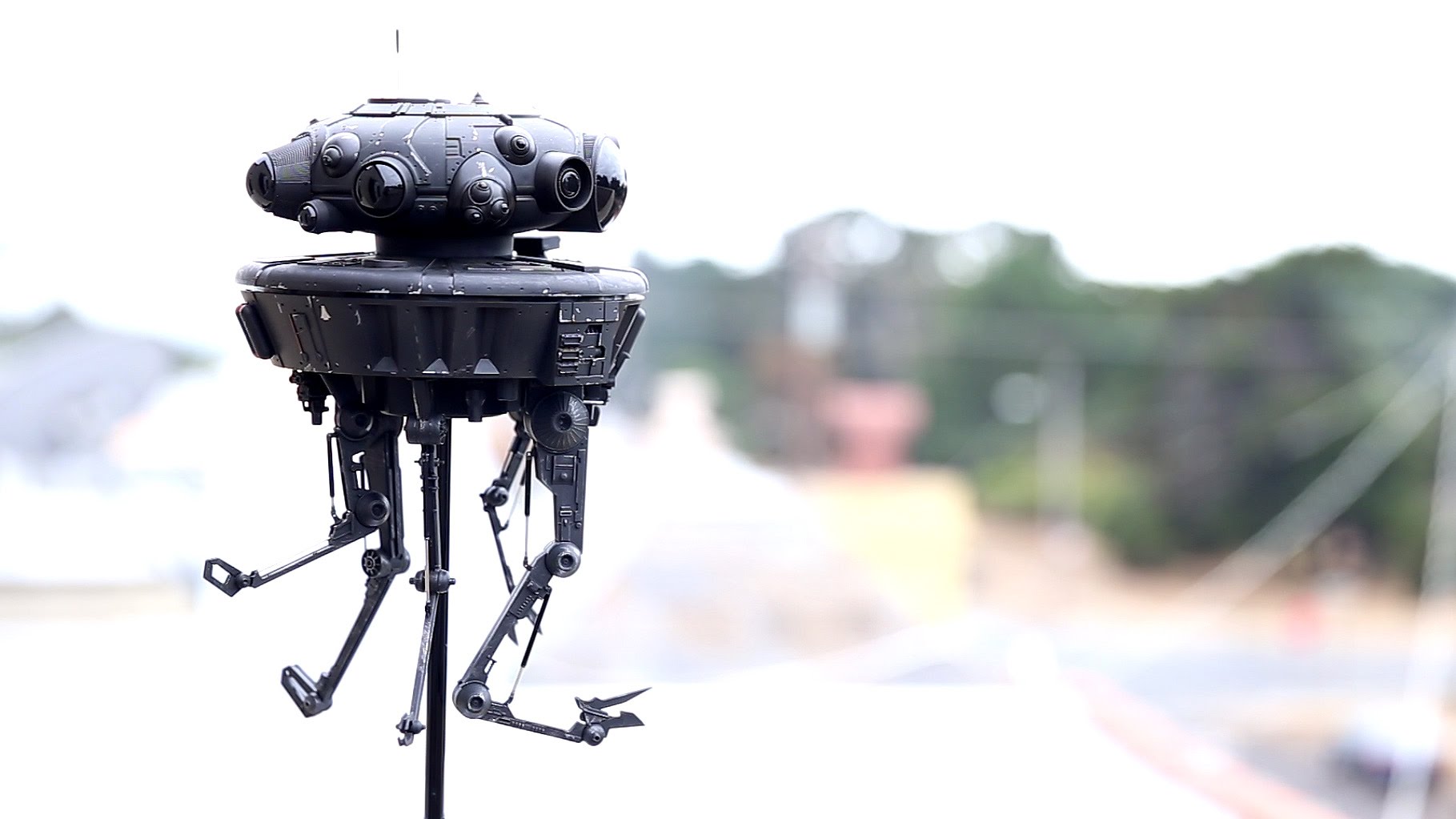
Imperial Probe Droid Project (via YouTube)

